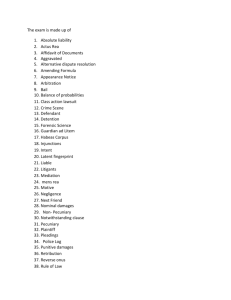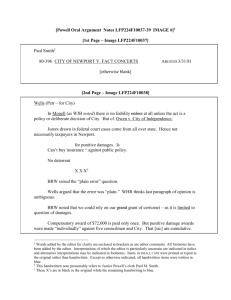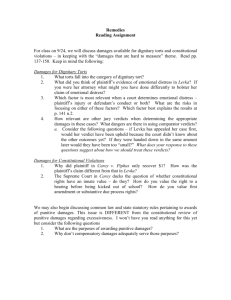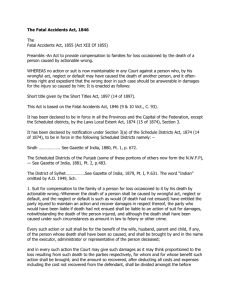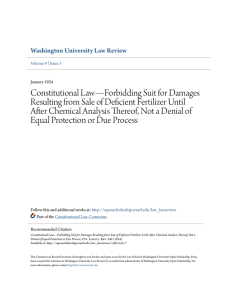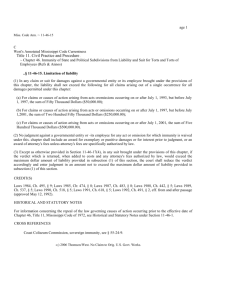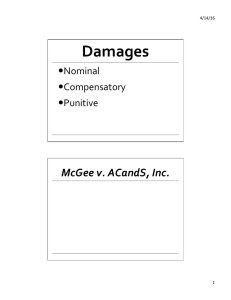Chapter 18: Environmental Law
advertisement
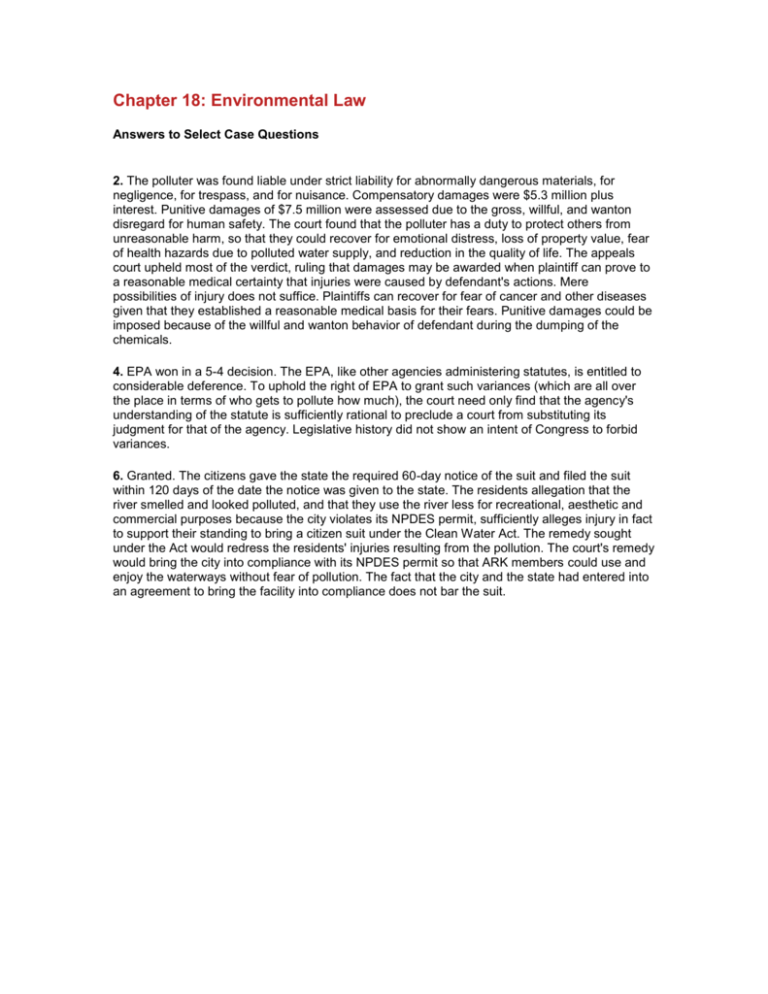
Chapter 18: Environmental Law Answers to Select Case Questions ETHOD OF ECONOMICS 2. The polluter was found liable under strict liability for abnormally dangerous materials, for negligence, for trespass, and for nuisance. Compensatory damages were $5.3 million plus interest. Punitive damages of $7.5 million were assessed due to the gross, willful, and wanton disregard for human safety. The court found that the polluter has a duty to protect others from unreasonable harm, so that they could recover for emotional distress, loss of property value, fear of health hazards due to polluted water supply, and reduction in the quality of life. The appeals court upheld most of the verdict, ruling that damages may be awarded when plaintiff can prove to a reasonable medical certainty that injuries were caused by defendant's actions. Mere possibilities of injury does not suffice. Plaintiffs can recover for fear of cancer and other diseases given that they established a reasonable medical basis for their fears. Punitive damages could be imposed because of the willful and wanton behavior of defendant during the dumping of the chemicals. 4. EPA won in a 5-4 decision. The EPA, like other agencies administering statutes, is entitled to considerable deference. To uphold the right of EPA to grant such variances (which are all over the place in terms of who gets to pollute how much), the court need only find that the agency's understanding of the statute is sufficiently rational to preclude a court from substituting its judgment for that of the agency. Legislative history did not show an intent of Congress to forbid variances. 6. Granted. The citizens gave the state the required 60-day notice of the suit and filed the suit within 120 days of the date the notice was given to the state. The residents allegation that the river smelled and looked polluted, and that they use the river less for recreational, aesthetic and commercial purposes because the city violates its NPDES permit, sufficiently alleges injury in fact to support their standing to bring a citizen suit under the Clean Water Act. The remedy sought under the Act would redress the residents' injuries resulting from the pollution. The court's remedy would bring the city into compliance with its NPDES permit so that ARK members could use and enjoy the waterways without fear of pollution. The fact that the city and the state had entered into an agreement to bring the facility into compliance does not bar the suit.

